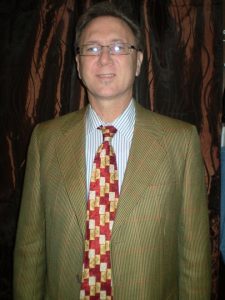Dr. David Try is an instructor at Northwest Community College and is also its coordinator of business administration.

1.Can you give us a bit of insight into how your thinking about online learning has evolved?
I first taught an online course in 2005, and was frankly unimpressed with the results. Naively, I thought that online teaching was basically a simple technological expansion of the classroom. Boy, was I wrong.
A couple of years later, I took a Royal Roads program that had an online component and I became aware that, properly done, online/distance education was effective.
Obviously, Northwest Community College (NWCC) can’t set up classrooms in the three-dozen or so small communities in our catchment area just to teach one or two students. Therefore, distance education is critical.
2.How has the Educational Technology Users Group (ETUG) helped your course planning and development?
At ETUG (2012) I met instructors who were actually doing what I was trying to figure out how to do. I received invaluable assistance and advice, found a ton of useful examples and material, and, as well, became firmly convinced I was on the right path!
I decided to broadcast my face-to-face (F2F) or in-classroom lectures over the Internet using Adobe Connect, and record them for later viewing. Consequently, I had to redevelop the courses to serve online students, and make them “paperless” too. Now, all my courses make extensive use of a learning management system (LMS) – NWCC uses Desire2Learn (D2L) – for course content, homework submission, and exams.
3.Tell us a bit more about your upcoming policy course and the open textbook you’ll be using?
After hearing about open source textbook publisher Flat World Knowledge at ETUG 2012, I reviewed a couple of its policy texts, and was impressed. They were as good as anything I had been using.
However, like other U.S.-based textbooks, there are few Canadian examples so I include examples from my own experience and professional library.
4.What type of learner do you hope you’ll attract?
I know when we’re teaching online, just like my F2F classrooms, we have to work a little harder to support all students, especially those returning to education after working or having families.
But, these are the students who are the most interesting, and the ones for who we can make the most difference. Some succeed, some don’t. If nothing else, the technology invites more students to give post secondary education (PSE) a shot.
5.How is technology changing post-secondary education?
When I look at a typical classroom, I see only marginal use of technology to-date (overhead projectors, PowerPoint, email). It is still the same “talking head” professor at the front of the room imparting wisdom and knowledge to a diverse group of students. LMS systems appear to be mostly used to replace paper, and increase speed (i.e. student get instant feedback from their quiz, not next week).
My personal goal is to spend 50% of each class with students learning-by-doing (not passively listening), or helping them develop skills in applying the course content (as compared to spending our time together acquiring knowledge).
I believe that over the next five years, technology will be making the same paradigm shifts in classrooms, as it did in offices and organizations.
Notable quotes
I have discovered teaching using a distance or online pedagogical approach provides a richer learning environment for the F2F students. -Dr. David Try
I don’t know where PSE will advance to, but I sense that IT is capable of developing and delivering individual-based learning—from a classroom-centric to a student-centered approach. -Dr. David Try
I believe that over the next five years, technology will be making the same paradigm shifts in classrooms, as it did in offices and organizations. -Dr. David Try
Learn more:
